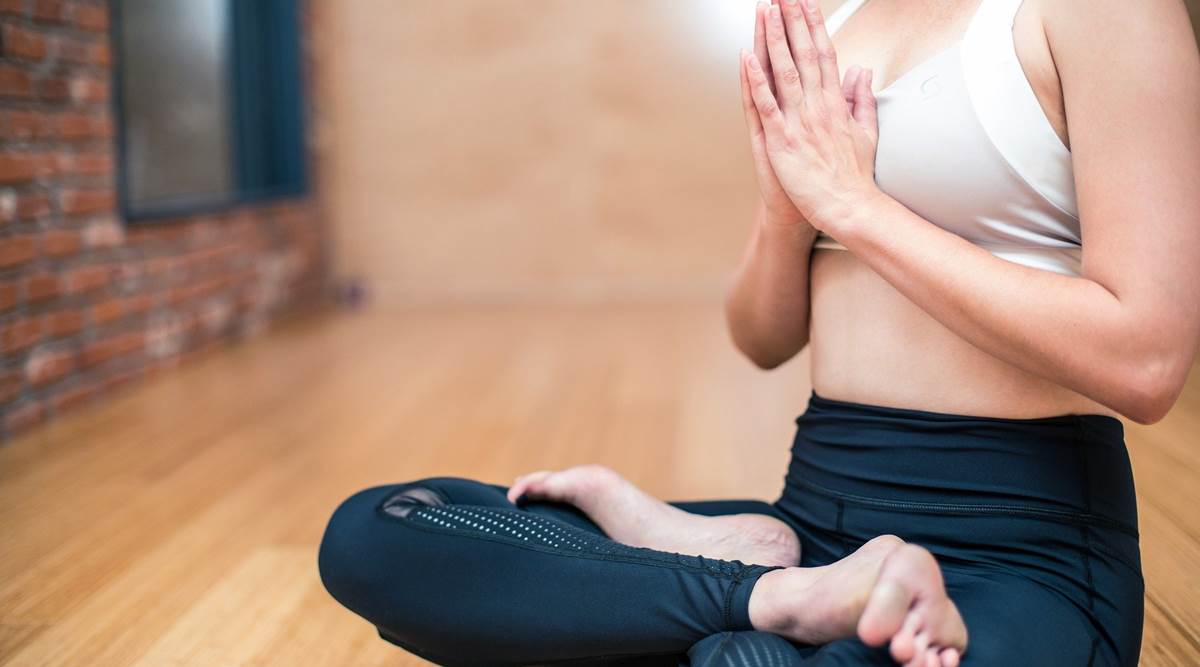 Meditation will be pivotal in your recovery process as it helps the body achieve a relaxed, sleep-like state which promotes healing, recovery, and regeneration. (Source: Pixabay)
Meditation will be pivotal in your recovery process as it helps the body achieve a relaxed, sleep-like state which promotes healing, recovery, and regeneration. (Source: Pixabay)Congratulations, you successfully beat COVID-19 infection, which is known to primarily attack the human respiratory system. But now that you have rid yourself of the virus, you need to work on getting your strength and health back. It is said that the recovery process can be slow because the body may feel immensely exhausted. As such, you are advised to eat well and get your immunity system and nutrition levels back on track.
Besides proper food and ample sleep, yoga asanas are known to help, too. According to Namita Piparaiya, a yoga and Ayurveda lifestyle specialist, and the founder of Yoganama, yoga is an excellent aid during the recovery process, because it helps to boost energy.
“The focus should be on improving lung capacity and the natural mucociliary clearance mechanisms of the respiratory system. Stress management is also an integral part because it’s not just the severity of the diseases that take its toll but also the stress of having caught a dreaded virus. So, both stress management and restoring the lungs’ function should be the focus of the yoga practice post-Covid-19,” she tells indianexpress.com.
Piparaiya suggests people engage in the following four yoga practices while they take the road to full recovery.
ALSO READ | Watch out! Pandemic fatigue can catch you off-guard
Preparatory asanas (5-10 minutes)
Doing some loosening exercises like joint rotations is an excellent way to begin the practice. During the convalescence period, these can be done lying down or sitting on a chair. Moving all critical joints like the ankles, knees, hips, spine, wrist, elbow, shoulder, and neck will help improve circulation and reduce body ache. Afterwards, non-standing posture like Thunderbolt Pose (Vajrasana), Child Pose (Balasana), Side Bends in Easy Pose (Sukhasana variation), Crocodile Pose (Makarasana), Half-Camel Pose (Ardha Ushtrasana), Seated Spinal Twist (Half Lord of the fishes pose), Supine Spinal Twist (Jataraparivartan asana), Pavanmuktasana (Wind releasing pose), etc. can be practised as per individual capacity.
Choose asanas that are not too intense but help you move the body gently in different directions. These will help open up the airways and get the circulation going throughout the body, which will help you feel energized.
Cleansing breathing kriyas (2-3 minutes)
Cleansing kriyas like Kapalabhati help improve lung function and cleanse the sinuses, preparing us for pranayama practices. These should be done gently at about 40 strokes a minute. Three rounds of 30 seconds each are sufficient. Those with heart issues, acidity, hernia, slip disc should avoid it. It’s essential to be on an empty stomach before practising it. It is best done early in the morning. Those who are unable to do Kapalabhati can do 2-3 minutes of deep breathing in a sitting or supine position as an alternative cleansing practice.
Pranayama (5-15 minutes)
The best time to practise Pranayama is after asanas and breathing kriyas. It is because the blood circulation improves, allowing oxygen to be carried more efficiently, and your nasal passages, as well as sinuses, would be clearer. Essentially, you get the maximum benefit out of your practice. Sectional breathing, Nadi Shuddhi, and Bhramari are three fundamental breathing practices that you should include in your post-Covid routine. Sectional breathing helps you access maximum lung capacity, Bhramari helps improve oxygen absorption, and Nadi Shuddhi is excellent for the nervous system. You can also do Pranayama before sleeping as long as there’s enough gap after dinner. It will help you have a good night’s rest. In all breathing practices try to make your exhalation longer than your inhalation — a good ratio is 1:2. The length of exhalation can be double the length of inhalation.
If you’re feeling short of breath and are not yet ready for Pranayama, then doing deep breathing in the prone position (lying on the belly) is also very helpful.
Meditation (10-20 minutes)
Meditation will be pivotal in your recovery process as it helps the body achieve a relaxed, sleep-like state which promotes healing, recovery, and regeneration. The more stress-free, positive, and relaxed we are, the faster our recovery will be. Covid-19 is tiring physically, but it can also exhaust us mentally because of all the attention and awareness around it. Setting positive affirmations, mentally chanting a mantra, praying to a deity, creating a healthy and happy vision of yourself, or visualizing walking through a beautiful garden and taking deep breaths are some ways to find a calm and relaxed state of mind.
For more lifestyle news, follow us: Twitter: lifestyle_ie | Facebook: IE Lifestyle | Instagram: ie_lifestyle